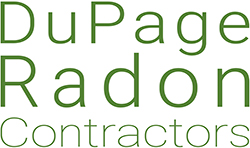The National Radon Action Plan is a set of actionable items set forth by the collaborative efforts of eleven different organizations including the federal Environmental Protection Agency and is led by the American Lung Association. It is intended to reduce the risk of cancer and other diseases from radon exposure and mitigate radon levels nationwide.
It is the result of a growing concern about radon safety and the prevalence of radon in areas populated by humans. Preventable instances of lung cancer traced back to radon are reaching all-time highs. Despite limited radon awareness and governmental efforts to address the presence of radon, the issue continues to threaten more lives every day.
Goals of the National Radon Action Plan
The production of the plan corresponds with the following goals:
- Testing – Projects are already in motion to organize and employ professional radon testing and mitigation services to determine the risk of radon nationwide and create a framework for reducing it to significantly safer levels.
- Support – Those people, businesses, and government agencies in need of radon reduction will also require financial support to compensate the radon mitigation professionals that are making their lives safer.
- Demonstration – Awareness of the dangers of radon is not currently comparable to the risk it poses to human life. Agencies must find a way to demonstrate radon safety to homes and businesses nationwide.
Accomplishing these goals creates a cyclical system that allows Americans to understand the risks of radon, determine their level of risk, and seek financial support to mitigate radon in high-risk areas. Doing so, however, will require the success of several smaller, localized projects.
Plan Methods and Strategies
Guidelines under the National Radon Action Plan dictate by timeline how various government agencies can work together to begin saving lives. It also outlines methodology on a broader level:
Increase Visibility
Supporters will coordinate messaging in healthcare and civic structures to increase radon awareness. Through high-quality and carefully produced materials, the National Radon Action Plan can begin increasing awareness of radon risk from early childhood well into adulthood.
Test and Mitigate
Once radon safety awareness has reached an acceptable level and financing is secure, the plan will set correspondence with government agencies and lenders to ensure that homes, business, and civic buildings in high-risk areas have access to testing and mitigation services. Supporters of the plan will seek support from charities and attempt to gain tax incentive eligibility for at-risk men and women.
Provide Incentives & Support
Agencies will begin rolling out systems for financial backing while prioritizing testing & mitigation for high radon risk areas. Information concerning financial support will be disseminated to increase awareness of financial assistance on a needs basis.
Build in Radon Risk Reduction
Where possible, the National Radon Action Plan seeks to embed risk-reduction standards into building codes across the nation. Agencies will attempt to secure radon mitigation financing as part of a home loan through cooperation with lenders. As an ongoing initiative, researchers will continue to find ways to improve cost-effectiveness of radon mitigation units.
When Will We See Changes?
Many projects are already underway that have the potential to begin improving radon safety. The plan is estimated to take several years, and unforeseen issues will likely stretch that timeline well. For now, the best protection against radon is to learn about it, spread the word, test for radon in your home or business, and start radon mitigation right away.





